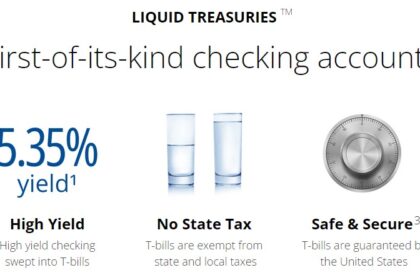Stellar, a decentralized blockchain network known for its efficient transactions, has become a significant player in the dynamic cryptocurrency landscape, capturing the attention of both traders and investors. This introduction sets the stage for a deeper exploration into the world of technical analysis, with a particular focus on the Moving Average Convergence Divergence (MACD). Among the plethora of available technical tools, MACD emerges as a powerful ally for traders. This article dives into the intricate components of MACD, unveiling its complexity and showcasing its indispensable role in deciphering market trends. The overarching purpose of this exploration is to shed light on how MACD, when applied thoughtfully, can act as a guiding force for traders navigating Stellar’s unpredictable market, contributing to more informed and strategic decision-making. Trading can be interesting if you know how to trade! Meet Immediate Definity Ai, one-of-its kind investment education firm that empowers traders with premium investment education.
Understanding MACD: Basics and Components
Explanation of MACD components: MACD line, Signal line, and Histogram
At its core, MACD comprises three key elements: the MACD line, Signal line, and Histogram. Each component plays a distinct role in portraying the momentum and potential trend changes within Stellar’s price movements.
How MACD is calculated and its interpretation
The calculation of MACD involves subtracting the 26-day exponential moving average (EMA) from the 12-day EMA. The result, the MACD line, is then used in conjunction with the Signal line to identify bullish or bearish market conditions.
The significance of MACD crossovers in identifying potential trend reversals
MACD crossovers, where the MACD line intersects with the Signal line, offer valuable insights. A bullish crossover suggests upward momentum, while a bearish crossover indicates a potential downturn. Traders keenly observe these crossovers for strategic entry and exit points.
MACD in Stellar’s Historical Performance
Analyzing historical price trends of Stellar using MACD
By retrospectively applying MACD to Stellar’s historical price data, patterns and correlations emerge. Examining how MACD responded to past market conditions provides practical insights into potential future scenarios.
Case studies of notable price movements and corresponding MACD signals
Real-world examples, such as significant price spikes or downturns, are analyzed alongside MACD signals. This retrospective approach aids in understanding how MACD could have informed trading decisions during specific historical events.
- Stellar Growth: Kelexo (KLXO) Presale Magnetizes Litecoin (LTC): Mantle (MNT) Investors Eyeing Disruptive Lending Impact
- Unraveling: How Volume Shapes Trading Strategies in the Stellar Market
Extracting insights into how MACD could have guided traders during specific market conditions
Through a systematic review of historical data, traders can gain a deeper understanding of how MACD might have functioned as a reliable guide, offering valuable foresight and aiding in risk management.
MACD as a Momentum Indicator for Stellar
Examining MACD as a momentum oscillator
MACD, as a momentum oscillator, captures the velocity of price movements. Traders leverage this feature to gauge the strength and speed of Stellar’s price changes, facilitating a more nuanced understanding of market dynamics.
How MACD helps traders identify the strength and speed of price movements in Stellar
By interpreting the distance between the MACD line and the Signal line, traders discern the intensity of buying or selling pressure. This insight equips traders with a valuable tool for gauging the vigor behind price trends.
Using MACD to confirm or contradict other technical indicators
Integrating MACD with additional technical indicators reinforces the reliability of trading signals. Confirmation or contradiction between MACD and other tools enhances the overall robustness of the analytical approach.
MACD Divergence and Convergence in Stellar Trading
Definition and significance of divergence and convergence in MACD
Divergence and convergence within MACD highlight potential trend reversals or continuations. Understanding these patterns is paramount for traders seeking to anticipate shifts in Stellar’s market sentiment.
Identifying potential trend reversals through MACD divergence/convergence
Divergence occurs when the price trend and MACD trend move in opposite directions, signaling a potential reversal. Conversely, convergence, where both trends align, indicates a continuation of the current trend. Traders use these patterns to make informed decisions.
Real-world examples of how MACD divergence/convergence influenced trading decisions
Examining instances where MACD divergence or convergence coincided with significant price movements elucidates the practical application of these patterns. Traders can draw valuable lessons from these examples when crafting their strategies.
Integrating MACD with Other Technical Analysis Indicators
The synergy between MACD and other indicators in Stellar analysis
While MACD offers robust insights, its synergy with other indicators enhances the depth of analysis. Combining MACD with trendlines, support/resistance levels, and Fibonacci retracements provides a holistic view of Stellar’s market dynamics.
Combining MACD with trendlines, support/resistance levels, and Fibonacci retracements
Strategic integration of MACD with complementary indicators enables traders to corroborate signals and refine their analysis. This multifaceted approach empowers traders with a more comprehensive understanding of Stellar’s market behavior.
Practical tips on creating a comprehensive trading strategy using MACD and complementary tools
Guidelines for effectively amalgamating MACD with other indicators are outlined. These practical tips assist traders in developing a robust and nuanced trading strategy that aligns with the unique characteristics of Stellar’s market.
MACD Strategies for Stellar Traders
Short-term and long-term trading strategies using MACD
Tailoring MACD strategies to different time frames is crucial for adapting to varying market conditions. Short-term traders benefit from different indicators than their long-term counterparts, and understanding these distinctions is key.
Tips for setting optimal MACD parameters for Stellar analysis
Optimal MACD parameter settings are explored, providing traders with guidance on fine-tuning this indicator to align with the unique volatility and characteristics of Stellar’s market.
Adapting MACD strategies to different market conditions and volatility levels
Markets are dynamic, and so are the strategies required to navigate them successfully. This section provides insights into adapting MACD strategies to thrive in diverse market conditions, ensuring flexibility and resilience.
Conclusion
In conclusion, this section serves as a comprehensive recapitulation of the pivotal role played by MACD in deciphering Stellar’s market trends and navigating the complexities inherent in cryptocurrency trading. Summarizing the key takeaways, it underscores MACD’s significance as a guiding force for traders, shedding light on potential market shifts. Additionally, a strong encouragement is extended to traders to seamlessly integrate MACD into their analytical arsenal, highlighting its unmatched potential for fostering informed and strategic decision-making. The paragraph concludes with a resounding acknowledgment of MACD as a valuable and enduring tool within the dynamic cryptocurrency landscape, recognizing its utility for traders navigating the intricacies of the Stellar ecosystem.
Disclaimer: This is promotional marketing content. The presented material by no means represents any financial advice or promotion. Be sure to research and acknowledge the possible risks before using the service of any trading platform.








